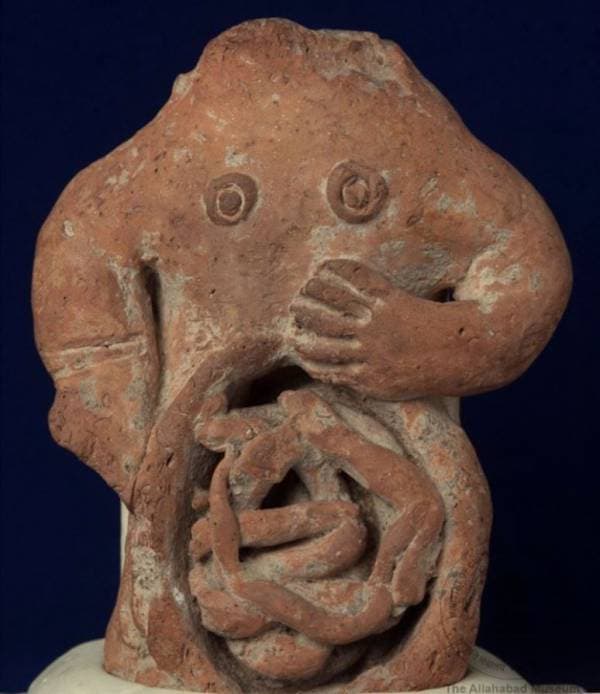Surgery in Ancient India

This ancient terracotta model from Kaushambi (UP) is the earliest archaeological depiction of surgery in India and indeed the earliest depiction of surgery in the whole of Asia.
It is dated back to c. 150 CE. It depicts a surgical dissection of a male stomach. It is now housed in the Allahabad Museum.
Kaushambi is the capital of the ancient Vatsa kingdom. According to Ancient Indian epics, Nachiketa was the fifth king of the Pandava line and a descendant of Abhimanyu. When Hastinapura was washed away by the flood, he shifted his capital to Kaushambi. He also brought with him the Chyavana priests, who were worshipers of Ashvins (cf. Adiparva, Mahabharata) and experts in medicine.
It is possible that this model owes its origin to the Chyavana school (or its descendants).
Image source: